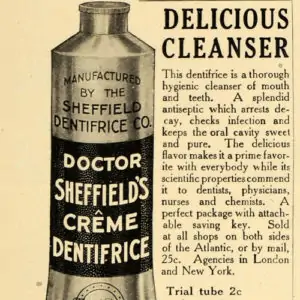Dentifrice might not be a popularly used word these days although in French, Dentifrice is the word for toothpaste. Dentifrices are usually any kind of agents that are used to clean the mouth and get rid of the plaque. These agents can be made in various forms – powder, gel, paste or liquid. The most popularly used Dentifrice are the toothpaste which when used in combination with the toothbrush help effectively remove the dental plaque and the residue food particles from the teeth.
The first dentifrice ingredient clinically proven to provide a health benefit was fluoride, which can be delivered from several different fluoride-based compounds. Over time, dentifrices evolved to provide multiple therapeutic and cosmetic benefits.
One of the primary reasons for using a dentifrice is to make the oral cavity taste fresh and feel clean; like everyone else, most dental professionals prefer to use a brush and dentifrice rather than a dry brush. People may be more concerned with preventing halitosis than removing plaque, especially given that plaque is not as immediately detectable. In fact, their compliance with any dentifrice increases when the taste of the dentifrice is appealing to the patient. Although a particular dentifrice may address a dental health need, an unpleasant taste decreases the likelihood that the patient will use the product.

